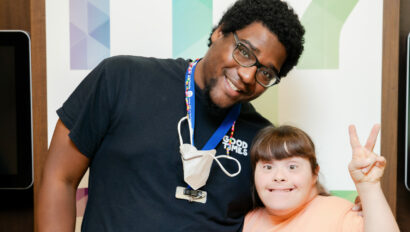Impact of Visual Disorders on the Development of the Young Child
How many parents get told by pre-school teachers that their children have problems paying attention? Or that they don’t participate in circle time or pay attention during story time or play with other kids on the playground? The number and frequency is huge, but the issue may have nothing to do with the child’s ability to concentrate. In fact, many of these behaviors can be attributed to difficulties in the visual domain.
So how do we determine whether our child’s actions indicate a behavioral issue or if there is something else going on? A good place to start is with an eye exam that specifically tests the child’s binocular vision, which is responsible for combining the information we take in from both eyes to create one image. Our eyes need to be aligned to be able to look at the same object at the same time or to see objects 3-dimensionally. Our binocular vision also helps us to accurately judge distance and movement.
Understanding this, let’s go back to the child in a preschool classroom and imagine what it would be like if that child’s eyes were not working in unison. Sustaining visual attention would be extremely difficult. But when a teacher observes a lack of focus or a poor attention span, the assumption is that the child must be ADD. If the child is not able to lace or string beads or doesn’t enjoy doing puzzles, they often jump to the same conclusion. But the real reason the child is showing a lack of interest or focus is because he or she is unable to judge where the bead or the lace should go. Their binocular visual system is not working properly, which in turn can cause problems with visual-motor integration, and they simply don’t know where to begin. They may be seeing double, which makes doing a puzzle or cutting paper a challenge. Their depth perception may be off as well, making it scary to climb or play on playground equipment. And a child who never pays attention during story time may have difficulty seeing the pictures in the book and loses interest or just can’t follow along.
Virtually all activities that young children are asked to participate in have a visual component and if their visual system is not working properly, the world can become a very scary place. As an occupational therapist, I recommend early visual evaluations by a developmental optometrist, who can examine both the integrity of the eyes and whether both eyes are working together. Just because a child can identify shapes or letters on a chart in the pediatrician’s office does not mean there is not a vision problem. In fact, many children with developmental disabilities and learning problems have undiagnosed vision problems. So, having an early routine eye examine can rule out a false ADD diagnosis and provide some very reassuring solutions and peace of mind. So let’s make our children’s world a friendly place and schedule an eye exam that can potentially save us unnecessary concern.

Written by Anita Miller, M.S., OTR Assistant Director,
Therapeutic Nursery


